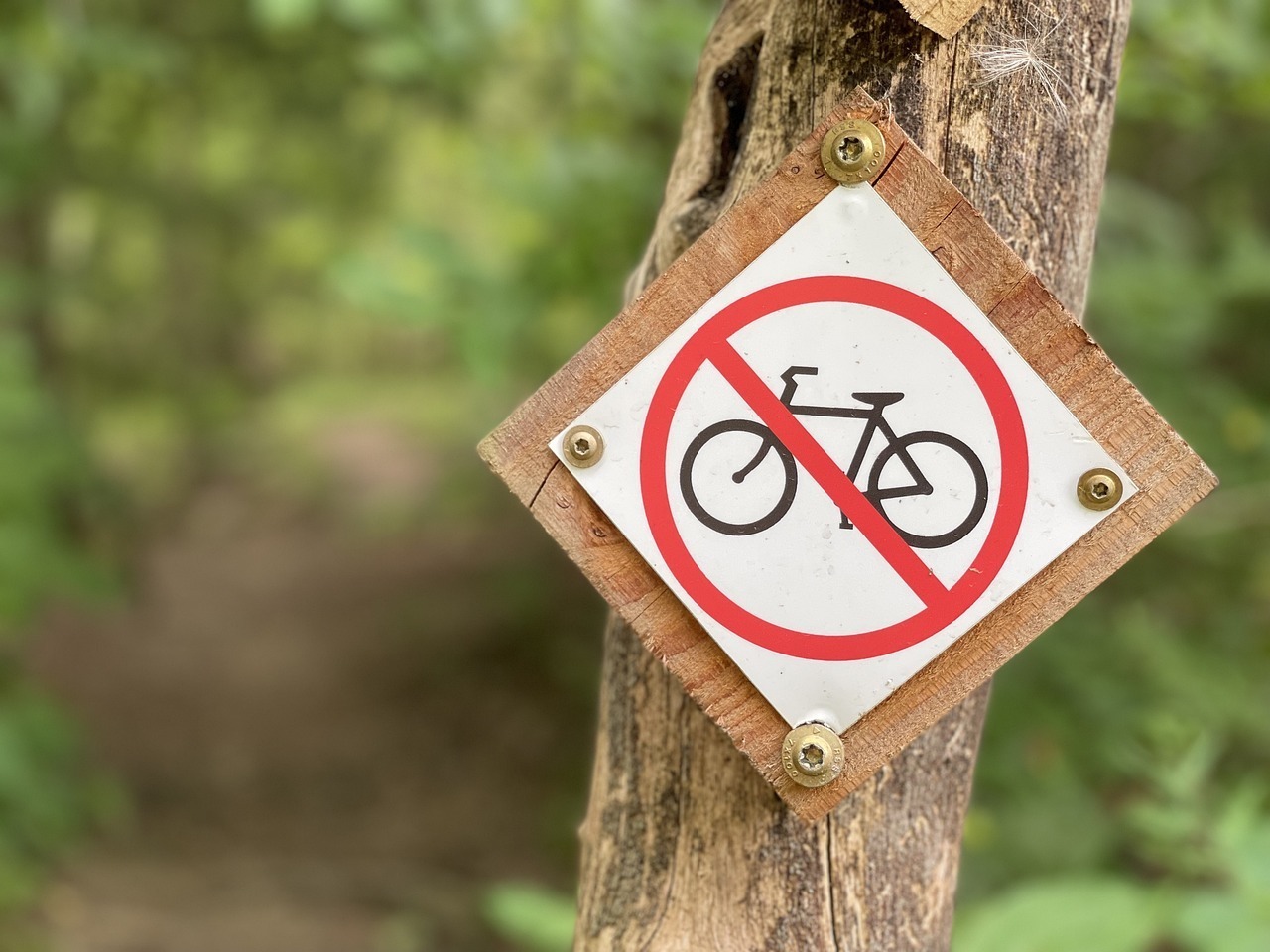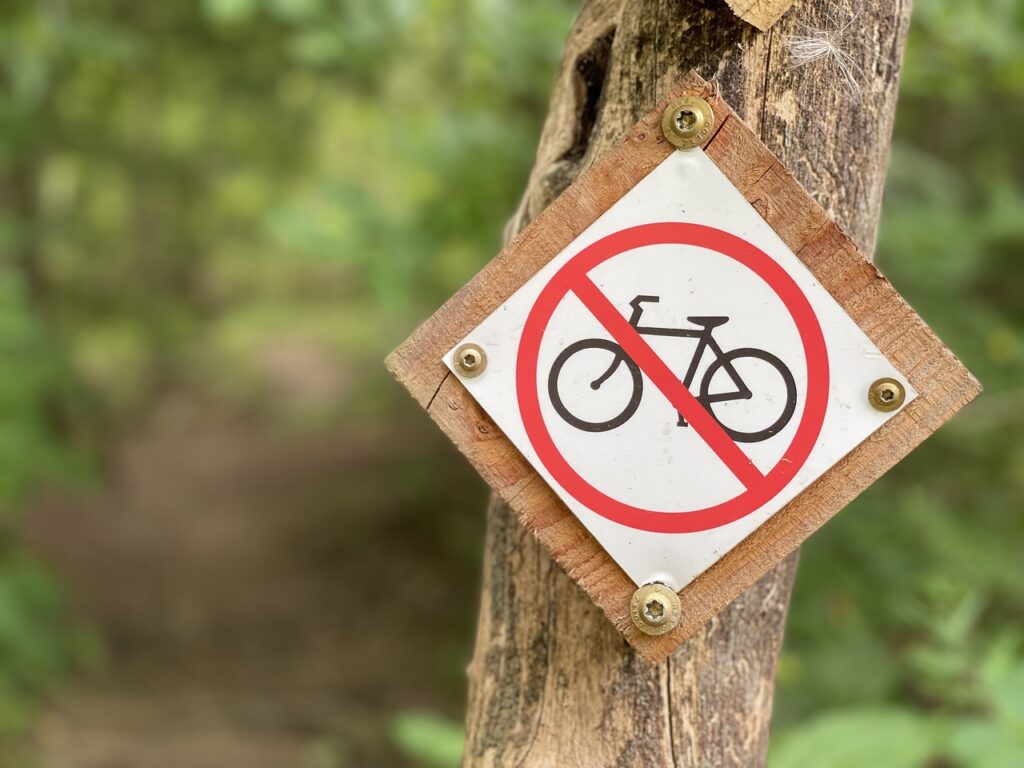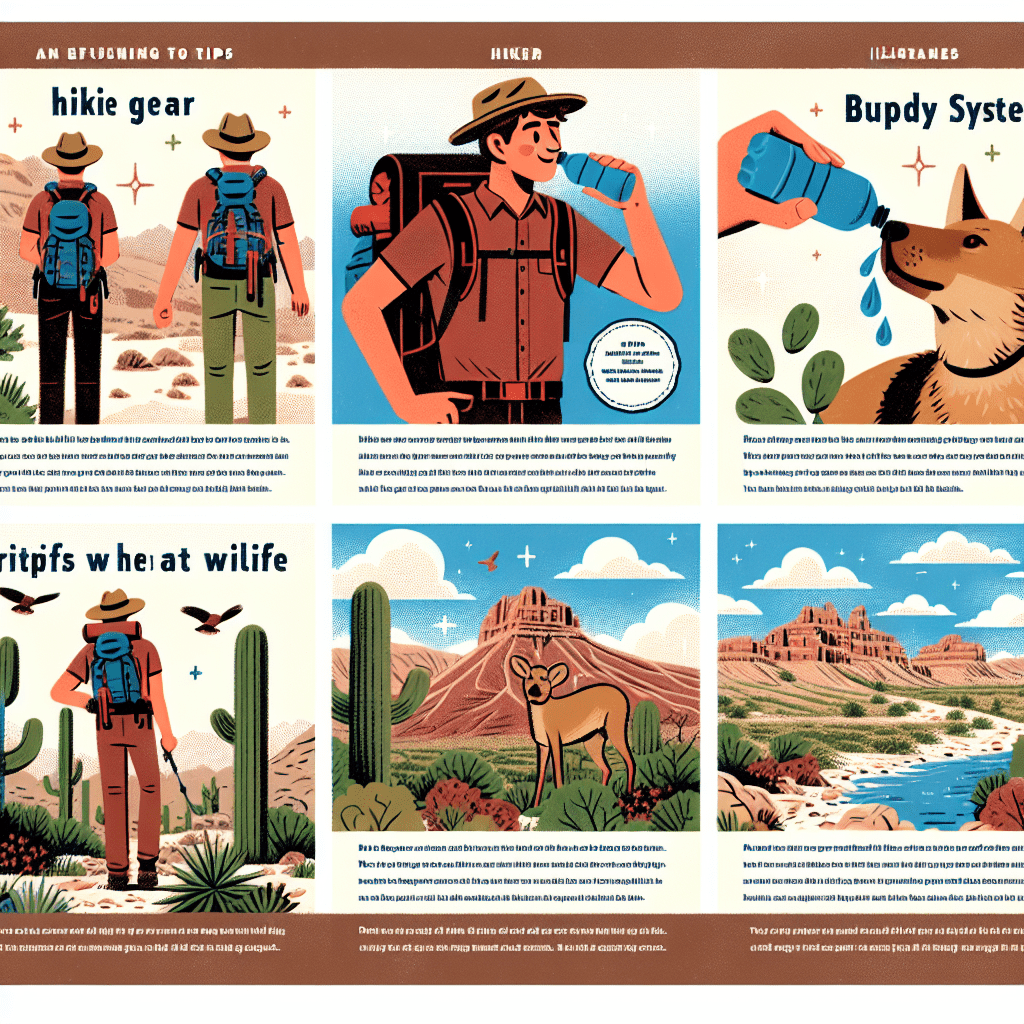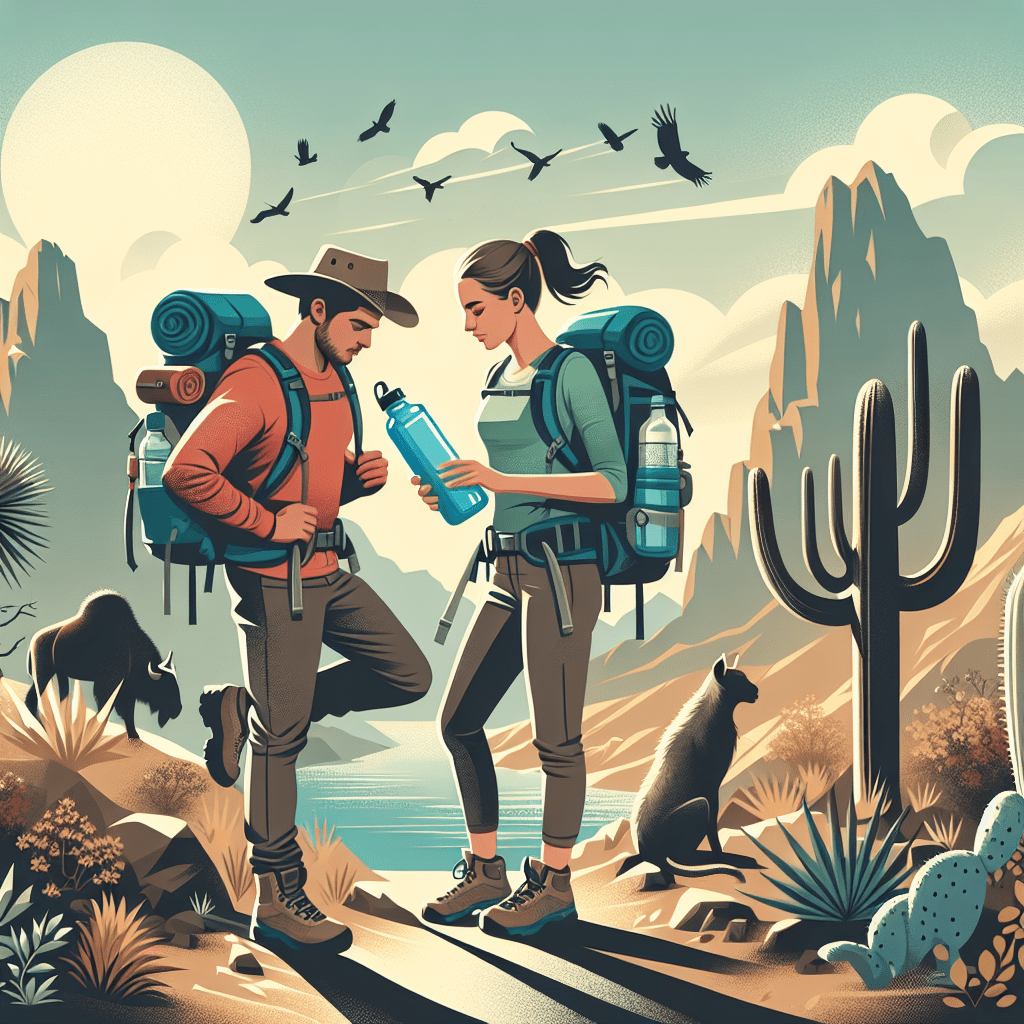
Big Bend National Park is a breathtaking destination for outdoor enthusiasts, offering stunning landscapes and endless opportunities for hiking adventures. However, it is crucial to prioritize safety while exploring this vast wilderness. In this article, we will discuss important safety measures to ensure an enjoyable and incident-free hiking experience in Big Bend National Park. From planning your route and packing essential items, to staying hydrated and being aware of wildlife encounters, we have got you covered. So grab your hiking boots and let’s embark on a safe and unforgettable journey in Big Bend!

General Safety Tips
When it comes to hiking in Big Bend, safety should always be a top priority. Here are some general safety tips to keep in mind before setting off on your adventure.
Research and Plan Ahead
Before heading out on a hike, it’s important to do your research and plan ahead. Familiarize yourself with the trail you’ll be hiking, including the distance, terrain, and any potential hazards. Check for recent trail updates or closures and make sure to take note of any specific regulations or permits required.
Inform Others of Your Plans
Always let someone know your hiking plans, including the expected trail and duration of your hike. This way, if anything goes wrong, someone will know where to look for you. It’s also a good idea to check in with this person once you’ve completed your hike to let them know you’re safe.
Start Early and Finish Before Dark
Starting your hike early in the morning not only allows you to enjoy cooler temperatures but also gives you ample time to complete your hike before dark. It’s important to give yourself enough time to hike at a comfortable pace without feeling rushed or stressed.
Stay on Marked Trails
It may be tempting to venture off the beaten path and explore new areas, but it’s crucial to stick to marked trails. These trails have been carefully designed and maintained to ensure your safety. Venturing off the trail can put you at risk of getting lost or encountering dangerous terrain.
Carry a Map and Compass
Even if you’re hiking on a well-marked trail, it’s always a good idea to carry a map and compass. These essential tools can help you navigate in case you get turned around or lose your way. Make sure you know how to use them properly before your hike.
Beware of Extreme Temperatures
Big Bend National Park is known for its extreme temperatures, with scorching hot summers and frigid winters. It’s important to be aware of these conditions and plan your hike accordingly. Avoid hiking during the hottest parts of the day and be prepared for rapid temperature changes, especially at higher elevations.
Pack Sufficient Water and Food
Proper hydration and nutrition are essential for a safe and enjoyable hike. Always carry enough water to stay well hydrated throughout your hike, especially in the desert environment of Big Bend. Pack lightweight, non-perishable snacks or meals to fuel your body during the hike.
Protect Yourself from the Sun
Sun protection is crucial when hiking in Big Bend. The desert sun can be intense, so be sure to wear sunscreen, a wide-brimmed hat, and sunglasses to protect your skin and eyes. Consider wearing lightweight, breathable clothing that covers your arms and legs to minimize sun exposure.
Dress Appropriately
Dress appropriately for the conditions you’ll encounter on your hike. Choose lightweight, moisture-wicking clothing in layers to regulate your body temperature. Wear sturdy, comfortable footwear that provides good ankle support and traction on different terrains. Carry extra layers and rain gear in case of unexpected weather changes.
Be Aware of Wildlife Encounters
Big Bend National Park is home to a diverse range of wildlife, including snakes, bears, mountain lions, and javelinas. While encounters with these animals are rare, it’s important to be prepared. Familiarize yourself with the wildlife in the area and learn how to react if you come across them. Keep a safe distance, do not approach or feed them, and always store your food securely to avoid attracting wildlife to your campsite.
Physical Fitness and Preparation
Being physically fit and well-prepared is essential for an enjoyable and safe hiking experience in Big Bend. Here are some tips to help you prepare and condition your body for the trails.
Assess Your Fitness Level
Before embarking on a challenging hike, it’s important to assess your current fitness level. Be honest with yourself about your physical abilities, endurance, and any pre-existing medical conditions that could affect your performance. Select hikes that align with your fitness level to avoid overexertion and potential injuries.
Train and Condition Your Body
If you’re not already physically active, consider incorporating regular exercise into your routine to improve your hiking fitness. Focus on building strength in your legs, core, and cardiovascular endurance. Activities like walking, hiking, jogging, cycling, and strength training can help prepare your body for the demands of hiking in Big Bend.
Practice Hiking with a Loaded Backpack
If you plan to carry a backpack on your hike, it’s important to train your body to handle the added weight. Gradually increase the weight in your backpack during training hikes to simulate the conditions you’ll encounter on the trails. This will help you adjust to the extra weight and build the necessary strength and endurance.
Weather Conditions
The weather in Big Bend can be unpredictable, with rapid changes that can catch hikers off guard. It’s crucial to stay informed and be prepared for varying weather conditions. Here are some tips to help you navigate the weather in Big Bend.
Check Weather Forecasts
Before heading out on a hike, check the weather forecasts for the area. Pay attention to temperature, wind, and any chances of thunderstorms or severe weather. Be prepared to adjust your plans accordingly or postpone your hike if the weather conditions pose a safety risk.
Prepare for Rapid Weather Changes
Big Bend’s weather can change quickly, especially in the higher elevations. Carry extra layers of clothing and rain gear to protect yourself from sudden temperature drops or unexpected rain showers. Be aware of signs of changing weather, such as darkening clouds or increasing winds, and make necessary adjustments to your plans.
Be Cautious of Flash Flooding
Flash floods are a significant hazard in Big Bend. Heavy rain in the surrounding mountains can cause sudden and dangerous flooding in canyons and washes. Be aware of the weather conditions and avoid hiking in narrow canyons or low-lying areas prone to flash flooding. Be especially cautious during the monsoon season (July to September) when flash flood risk is higher.
Avoid Hiking During Severe Weather
If severe weather, such as lightning storms or high winds, is forecasted, it’s best to postpone your hike. Seek shelter and wait for the conditions to improve before continuing your hike. Your safety should always be the top priority, and it’s better to err on the side of caution.
Risks of Extreme Terrain
Big Bend’s diverse terrain offers breathtaking views but also presents certain risks that hikers should be aware of. Here are some essential considerations when hiking in areas with extreme terrain.
Understand the Geological Hazards
Big Bend’s rugged landscape includes geological hazards such as cliffs, ledges, loose rocks, and steep slopes. It’s crucial to understand and respect these hazards to avoid accidents. Stay on designated trails and avoid venturing close to cliff edges or unstable rock formations.
Be Mindful of Steep and Unstable Areas
When hiking in steep or unstable areas, take extra precautions. Choose foot placements carefully and maintain a firm footing. Use trekking poles for added stability and support. Avoid shortcuts that lead you off the established trail and stay alert for loose rocks or debris that could cause you to slip or lose balance.
Stay Away from Cliffs and Ledges
While it can be tempting to get closer to the edge of a cliff or ledge for a better view, it’s crucial to prioritize your safety. Falling from heights poses significant risks, so it’s best to admire the views from a safe distance. Always remain cautious and do not cross any boundaries or fences that are in place for your protection.
Be Prepared for River Crossings
Big Bend has several rivers and streams that may need to be crossed while hiking. These crossings can be challenging, particularly during periods of high water flow. Before attempting a river crossing, assess the conditions and consider the depth, speed, and stability of the water. If in doubt, wait for the water levels to recede or seek an alternate route.

Safety Equipment and Essentials
Carrying the right safety equipment and essentials is vital for a safe and prepared hiking experience. Here is a list of essential items that every hiker should have in their backpack when exploring Big Bend.
Carry a First Aid Kit
A comprehensive first aid kit is a must-have item when hiking in Big Bend. It should include bandages, adhesive tape, antiseptic ointment, pain relievers, blister pads, insect bite relief, and any necessary personal medications. Familiarize yourself with basic first aid procedures and have the knowledge and skills to address common injuries or ailments that may occur on the trail.
Pack Emergency Shelter
In case of emergencies or unexpected overnight stays, it’s essential to carry emergency shelter, such as a lightweight, compact tent, emergency bivvy, or a space blanket. These items provide protection from the elements and help maintain body heat if you are stranded or unable to continue your hike.
Use Trekking Poles
Trekking poles help improve balance, reduce strain on your knees and joints, and provide additional stability on uneven terrains. They can also be beneficial during river crossings or when navigating steep slopes. Adjust your trekking poles to the correct height for your comfort and use them consistently throughout your hike.
Bring a Headlamp or Flashlight
A reliable headlamp or flashlight is an essential item to have in your backpack. It’s important to always be prepared for unexpected delays or if your hike takes longer than anticipated and you find yourself hiking in low light conditions or in the dark. Make sure to carry extra batteries or a backup light source.
Carry a Whistle
A whistle is an effective communication tool and a vital piece of safety equipment. In case of an emergency or if you get lost, a whistle can help alert others to your location. Three short blasts on a whistle are widely recognized as a distress signal. Carry a whistle attached to your backpack or on a lanyard around your neck for easy access.
Have a Multi-tool or Knife
A multi-tool or a knife with various functions can come in handy in a wide range of situations, from cutting rope to fixing gear or assisting with minor repairs. Choose a compact, lightweight option that fits comfortably in your backpack and always use it safely and responsibly.
Wildlife Safety
Big Bend is home to a diverse array of wildlife, and encounters with animals can be a thrilling part of your hiking experience. However, it’s important to be informed and take precautions to ensure both your safety and the well-being of the wildlife.
Learn About Native Wildlife
Before hiking in Big Bend, take the time to learn about the native wildlife that inhabits the area. Familiarize yourself with the behaviors, habitats, and potential risks associated with animals such as snakes, bears, mountain lions, and javelinas. Knowledge is key to understanding how to coexist safely with wildlife.
Keep a Safe Distance
When encountering wildlife, maintain a safe distance and never approach or attempt to feed them. Respect their natural habitat and observe them from a distance using binoculars or a telephoto lens. Giving animals space ensures their safety and reduces the risk of accidents or conflicts.
Store Food Properly
To minimize the chances of attracting wildlife to your campsite, it’s important to store food properly. Use bear-resistant canisters or hang your food from a designated food storage pole or tree, following the recommended guidelines for the area. Proper food storage helps protect both you and the animals by preventing potentially dangerous encounters.
Understand How to React to Wildlife Encounters
In the event of a wildlife encounter, it’s essential to react calmly and responsibly. Maintain a safe distance and do not turn your back on the animal. If the animal appears threatened or aggressive, back away slowly while facing the animal. Avoid sudden movements or loud noises that could escalate the situation.
Know How to Respond to Snake Bites
Snakes, including venomous species such as rattlesnakes, are found in Big Bend. If you are bitten by a snake, it’s important to remain calm and seek immediate medical attention. Make note of the snake’s characteristics to help with identification but do not attempt to capture or kill the snake. Keep the affected area immobilized and slightly elevated while seeking medical assistance.

Group Safety
Hiking in a group provides an added layer of safety and camaraderie. By following these group safety guidelines, you can enhance your hiking experience and ensure everyone’s well-being.
Hike with Others
Whenever possible, hike with at least one other person or in a group. Having others around provides support, boosts morale, and offers an extra set of eyes and ears. Hiking with a group also helps in case of emergencies or if someone needs assistance.
Establish Communication and Signals
Before starting your hike, establish clear communication methods and signals with your hiking companions. Agree on hand signals or verbal cues for important messages such as stopping, slowing down, or indicating emergencies. Having a reliable means of communication within the group enhances safety and coordination.
Have a Group Leader
Designate a group leader who is responsible for making decisions, setting the pace, and ensuring everyone in the group stays together. The group leader should be experienced, knowledgeable of the area, and possess good navigation skills. They should also have a plan for responding to emergencies and be familiar with basic wilderness first aid.
Set a Turnaround Time
When embarking on a hike, establish a turnaround time. This is the designated time at which the group agrees to assess the conditions and make a decision to continue or turn back. Adhering to the turnaround time ensures that the group stays on schedule and doesn’t risk hiking in unsafe conditions, especially if daylight hours are limited.
Practice Buddy System
Implement the buddy system within the group. Each person pairs up with another, stays within sight or hearing distance, and is responsible for keeping an eye on their buddy’s well-being. The buddy system helps ensure that no one gets lost or left behind, and allows for prompt assistance in case of an emergency.
Stay Together
Maintaining group cohesiveness is important for safety, especially in unfamiliar or remote areas. Avoid splitting up the group unless absolutely necessary. If someone needs to use the restroom or take a short break, make sure to wait for them before continuing on the trail.
Emergency Preparedness
While we all hope for a safe and incident-free hiking experience, it’s essential to be prepared for emergencies. These tips will help you stay calm, react effectively, and seek help if needed.
Know Your Location
Before setting off on a hike, familiarize yourself with the location and trail route. Carry a map, GPS device, or a reliable trail guide to assist with navigation. If you find yourself lost or disoriented, use these tools to help identify your location and determine the best course of action.
Carry an Emergency Communication Device
Having a reliable means of communication can be crucial in case of an emergency. Carry a fully charged mobile phone and consider investing in a satellite communicator or personal locator beacon (PLB) for areas with limited cell phone coverage. These devices can help notify emergency services or contact your designated emergency contact for assistance.
Learn Basic Wilderness First Aid
Having a basic understanding of wilderness first aid can be invaluable in a backcountry emergency. Consider taking a wilderness first aid course to learn essential first aid skills tailored to the challenges of hiking and backpacking. Knowing how to manage common injuries, including sprains, cuts, and heat-related illnesses, can make a significant difference in your ability to respond effectively.
Understand Signaling for Help
In case of an emergency, knowing how to signal for help can significantly increase your chances of being located quickly. Carry a whistle, mirror, or other signaling devices that can attract attention from rescuers. Learn Morse code or other distress signals to communicate your need for assistance using light or sound.
Stay Calm and Rational
In an emergency situation, it’s crucial to stay calm and think rationally. Panic can cloud judgment and hinder your ability to make sound decisions. Take a few deep breaths, assess the situation, and prioritize your safety and that of others. Remaining calm allows you to think clearly and take appropriate actions to ensure a positive outcome.

Water Safety
Staying properly hydrated is vital for your well-being while hiking in Big Bend. It’s important to understand the risks associated with water sources and take precautions to stay hydrated and avoid contaminated water.
Treat All Water Sources
While Big Bend offers natural water sources, such as rivers and streams, it’s essential to treat the water before consuming it. Waterborne pathogens can cause illnesses, so use water treatment methods such as filtering, purifying tablets, or boiling to ensure the water is safe for drinking. Avoid drinking untreated water to prevent gastrointestinal issues and other illnesses.
Carry Sufficient Amounts of Water
Water is your most important resource while hiking, particularly in a desert environment like Big Bend. Carry enough water to stay well hydrated throughout your hike, even if you expect to encounter water sources along the way. The amount of water needed varies depending on factors such as temperature, distance, and individual hydration needs. As a general guideline, aim for at least one gallon (3.78 liters) of water per person per day.
Manage Your Hydration
Proper hydration is crucial for maintaining your health and well-being while hiking. Drink water regularly, even if you’re not feeling thirsty, to prevent dehydration. Take small, frequent sips rather than chugging large amounts of water at once. Monitor your urine color; clear or light-colored urine is an indication of good hydration.
Recognize Signs of Dehydration
Recognizing the signs of dehydration is important to prevent serious health issues. Symptoms of dehydration include excessive thirst, dry mouth, dark-colored urine, fatigue, dizziness, confusion, and muscle cramps. If you or someone in your group experiences any of these symptoms, take immediate action to rehydrate and rest in a shaded area.
Avoid Drinking Contaminated Water
To prevent waterborne illnesses, avoid drinking water from untreated sources or those that may be contaminated. This includes water from streams, rivers, or standing bodies of water that could harbor harmful bacteria, parasites, or other contaminants. Stick to treated water sources or carry your own supply to minimize the risk of illness.
Trail Etiquette
Practicing trail etiquette ensures a positive and enjoyable experience for yourself and other hikers. When hiking in Big Bend, keep these guidelines in mind to minimize your impact on the environment and respect the experience of others.
Leave No Trace
The principle of “Leave No Trace” emphasizes minimal impact hiking and camping practices. Pack out all trash, including food wrappers, toilet paper, and any other waste. Respect the environment by refraining from picking flowers, damaging vegetation, or leaving graffiti. Leave nature as you found it, preserving its beauty for future hikers to enjoy.
Respect Wildlife and Plants
Observe and appreciate wildlife in their natural habitat without disturbing or harassing them. Do not feed the animals, approach them too closely, or attempt to handle them. Avoid trampling vegetation and stay on designated trails to protect delicate flora. Appreciate the beauty of the plants and animals while maintaining a respectful distance.
Do Not Disturb Historical or Cultural Artifacts
Big Bend has a rich cultural history, with ancient rock art and archaeological sites scattered throughout the park. These artifacts are protected by law, and it’s essential to admire and respect them without causing any damage. Do not touch or disturb any historical or cultural artifacts you encounter, and report any significant findings to the park authorities.
Yield to Uphill Hikers
When encountering other hikers on the trail, always yield to those traveling uphill. Uphill hikers exert greater effort and benefit from maintaining their momentum. Step aside and allow them to pass safely without disrupting their rhythm. If hiking in a group, make sure the entire group yields to the passing hiker or group.
Avoid Excessive Noise
Keep noise to a minimum while hiking to preserve the tranquility of the wilderness. Avoid playing loud music, shouting, or engaging in loud conversations that can disrupt the experience of others. Be mindful of your surroundings and the peacefulness of nature, allowing everyone to enjoy the sounds of birds, wind, and running water.
Be Considerate of Other Hikers
Respect fellow hikers by being considerate and courteous on the trail. Keep a safe distance between groups, allowing others to pass when necessary. If using trekking poles, be mindful of their reach to avoid accidentally striking others. If you encounter a more significant group, step aside and offer a friendly greeting or word of encouragement.
By following these comprehensive safety tips, you can make the most of your hiking experience in Big Bend while ensuring your own safety and the well-being of the environment and wildlife. Stay informed, be prepared, and enjoy the breathtaking beauty of this unique and diverse national park. Happy hiking!
